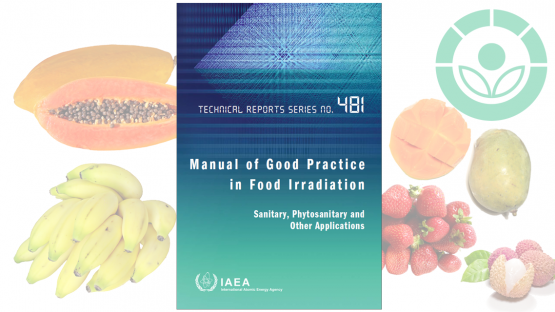A new IAEA publication released last week aims to help improve food irradiation practices worldwide, with a focus on developing countries. Prepared in partnership with the Food and Agriculture Organization of the United Nations (FAO), the publication is intended for operators of irradiation facilities, food regulators, manufacturers, traders, certification bodies and government organizations.
Amid recent changes in the radiation processing industry — including new quality assurance procedures, international standards and codes of practice — operators of irradiation facilities need new compliance strategies.
“This manual substantially differs from past publications in that it includes very practical technical information on how to apply food irradiation technology,” said Yves Hénon, food irradiation specialist at the Joint FAO/IAEA Division of Nuclear Techniques in Food and Agriculture and the lead author of the manual.
Food irradiation is an effective and economical solution to address a range of food quality, safety, and security problems without significantly affecting the food’s physical or nutritional attributes. Approximately 750 000 tonnes of food are irradiated each year, mainly in the Asia and Pacific region and the Americas, Hénon estimated. See this video on how it is used in Indonesia to ensure food quality and increase shelf-life, meeting international food safety standards.
Food safety and quality has been a very important issue in many developing countries in recent years, particularly in China, where the majority of the world’s food irradiation facilities are located, said Zhihua Ye, Head of the Food and Environmental Protection Section at the Joint FAO/IAEA Division.
Since 2012, gamma radiation has been used in the Sichuan province of China to improve the quality and shelf-life of more than 130 000 tonnes of a regional delicacy: spicy chicken feet. The snack has become popular and is sold in convenience stores across the country. “This is a good example of how food irradiation — when implemented correctly — can have a positive impact on food for many people,” Ye said.
The publication is the outcome of an IAEA technical cooperation project promoting best practices of food irradiation in Asia and the Pacific.
Distance Learning
In addition to the manual’s publication, in May this year, the IAEA launched a related e-learning course targeted at developing countries. Since its launch, more than 700 people from 44 countries have taken the course to gain practical knowledge in improving food irradiation processes. The course is free and offers video tutorials, interactive media learning tools, and the opportunity to earn a three-year certification in food irradiation practices.



